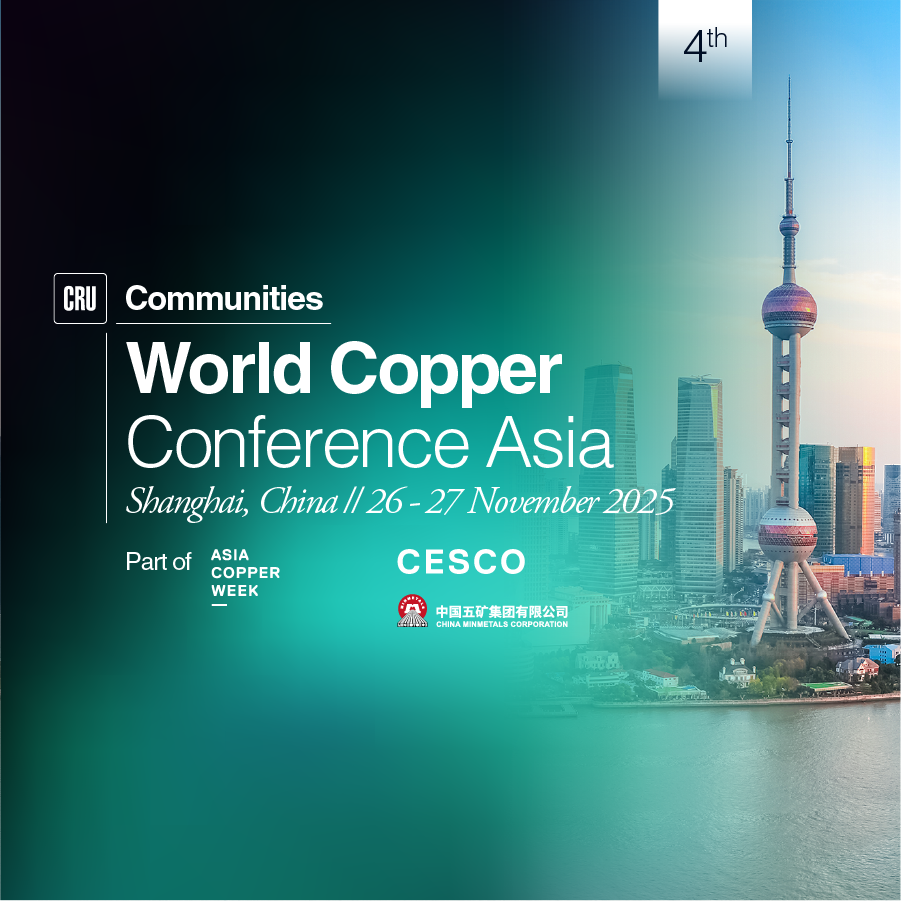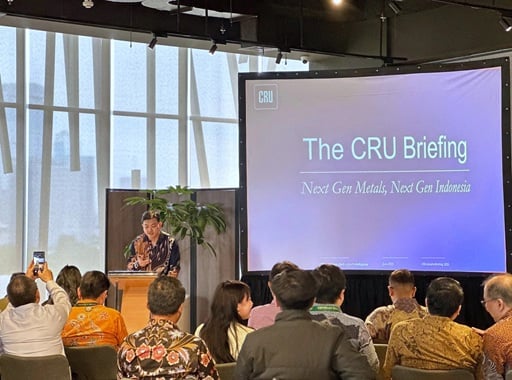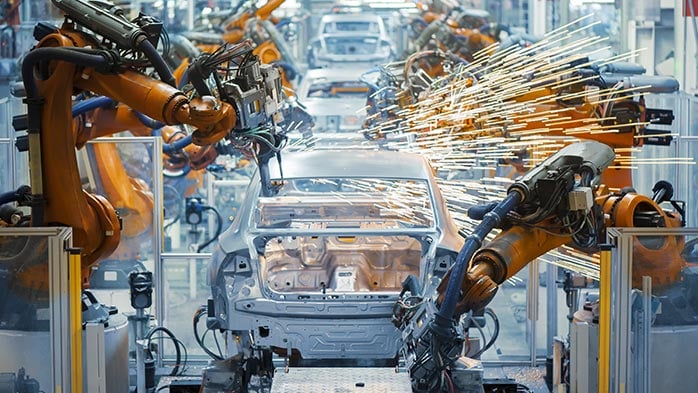CRU’s pipeline of potential copper projects in Argentina includes El Pachon, Los Azules, Josemaria, Taca Taca and MARA. These projects could start production within the next decade, to positively impact the Argentinian economy with an average ~$4 billion per year between 2031 and 2040 – based in CRU’s Host Country Cash Flow (HCCF) methodology.
The cumulative impact to the economy of ~$47 billion by 2040 is only comparable to the record $44 billion International Monetary Fund bailout loan received by Argentina only a couple years ago. Our findings also suggest that President Milei’s RIGI regime could boost the competitiveness of these projects, resulting on an average effective tax rate of 38% compared to 47% in the absence of RIGI. This transformative potential depends on long-term stability to attract investment and build local capacities for major copper mining projects – a challenge ahead for mining companies and governments alike.
Major copper projects could see the light by the end of the decade, driven by greenfield projects
Argentina has been in the copper mining spotlight, with major mining companies announcing significant investments and encouraging progress in major projects located in the northwest provinces. The BHP-Lundin C$4.1 billion transaction announced in 2024 – to jointly develop the Josemaria and Filo del Sol projects – reflects the interest from major mining companies to invest in Argentina’s copper riches.
CRU has identified five milestone copper projects that could start production within the next ten years in Argentina. Most notably among these projects, only Glencore’s MARA could be considered a brownfield project – albeit a greenfield deposit with existing processing and infrastructure capacity – in contrast to Chile and Peru, where brownfield expansions dominate the pipeline. Alongside the above-mentioned BHP and Lundin Mining, other players include Glencore, First Quantum and junior developer McEwen Mining.
The cumulative economic impact of these projects can add ~$47 billion to the Argentinian economy by 2040
Quantifying the contribution of mining activity to the host country’s economy can be a challenging task, and many times misunderstood or failed to be properly considered for policy making. While much of the discussion focuses on tax and royalty payments, at CRU, we have defined the total impact on the local economy as the Host Country Cashflow (HCCF).
This takes into consideration not only taxes but also the portion of operational costs (opex) and investments (capex) that remain in the local economy. Examples of this include direct jobs and the fraction of supplies generated within the local economy. Therefore, the HCCF is more representative of the aggregate impact on the economy of a mining operation and incorporates the particularities of each specific asset.
Based in CRU’s estimates for production and operational cashflow forecasts (see CRU’s Copper Mines Assets Service), we calculated the Argentina HCCF up to 2040 for the five mines previously described assuming all these projects start operation as planned. For these calculations, we assume the RIGI regime comes into effect – this is an investment incentive regime promoted by President Milei’s administration and is applicable for mining-related major investments. Under the RIGI regime, corporate tax is set at 25% (in contrast to the 35% regular regime), remains invariable for 30 years.
As shown in the chart below, CRU estimates that Argentina’s Cashflow start ramping up at the construction stage of the mines, with the capex HCCF share being the most relevant component up to 2029. As mines start production, taxes and the opex HCCF shares become more relevant from 2030 onwards. In the last few years of the forecast period, the opex HCCF component starts to have a larger impact, linked to increasing costs as earlier years of operation are benefited of higher grades and less mining hauling related costs. In sum, for the ten-year period between 2031 and 2040, the average annual contribution to the economy is forecast to be ~4$ billion per year.
Our results show that the most significant component are taxes, of which it is the corporate income tax the most significant adding 52% of the total tax component of the HCCF. Export taxes and royalty follow through, the latter particularly relevant for local provincial governments as royalties are levied directly to the province and not the federal government.
The impact in perspective of the hectic Argentinian economy
Argentina surpassed all other nations to become the International Monetary Fund’s (IMF) largest debtor in 2018, following a $57 billion bailout aimed at stabilizing the economy and mitigating the crisis faced by the country after decades of government mismanagement. This loan was later re-negotiated in 2022, and the IMF approved a $44 billion extended arrangement that will delay payments to start in 2026.
Put in perspective, in a period of approximately ten years, these five copper mines could have an economic cumulative effect comparable in size to the IMF loan – without debt repayment – and thus, would be equally transformative for the Argentinian economy. In addition, the HCCF not only considers taxes that are a direct inflow of capital to the state, but two other direct components that could trigger further multiplier effects and linkages across sectors in the economy. This is a characteristic of the capital-intensive mining industry that has proven to be pivotal in the economic activity of resources-rich countries in South America (namely Chile, Peru and Brazil).
Milei’s RIGI would give Argentina a much-needed competitive edge on mining taxes over Chile and Peru
Compared to copper-giant neighbours Chile and Peru, Argentina is still in its infancy in terms of development of its mining industry. While mining has been possible at smaller scales of investment (including lithium), these types of Tier-1 mining investments are still elusive. For mining companies, the country poses multiple industry-specific risk factors and country-level risks – inability to repatriate dividends, for example – that in sum translate in detrimental conditions for foreign investors.
In this context, the RIGI regime can be an effective mechanism to attract investment and enable the development of these major copper projects. One of the key elements included in RIGI is a special tax regime. Under RIGI, we forecast an average effective tax rate of 38% for the 2026–2040 period for the copper mining industry in Argentina (considering the five mines included in this analysis, calculated as total taxes over EBIT). This is in line with Chile’s older regime – no longer in effect since 2024 – that also considered tax invariability incentives and is seven and four percentual points lower than the current regimes of Chile and Peru, respectively.
Can Argentina deliver in the long term?
The outlook for the Argentinian copper mining industry is auspicious. In addition to the strong pipeline of projects reviewed in this insight, there are other earlier exploration and development-stage greenfield projects in the country. These include BHP-Lundin’s Filo del Sol, Aldebaran’s Altar and South32’s Chita, among others. The rapid growth of the lithium industry in Argentina in the last five years is a positive example of how greenfield mining projects can be developed in the country. However, the capital, infrastructure, labour, services and goods suppliers’ intensities – as well as overall scale – of major copper mines are significantly higher.
In this context, long-term certainties are needed for investors to feel comfortable and for the local capacities to be developed to support the commissioning and operation of major copper mining projects. Mining companies must navigate these uncertainties but also be proactive in fostering these enabling factors. At the same time, policies enacted by the current administration to attract investment must have a long-term horizon. Quantifying the positive socio-economic impact of the industry can be critical to gain socio-political support for this outcome.

















